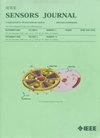Liquid Crystal Microlens Arrays Based on Aluminum-Doped Zinc Oxide Oriented Microstructure Facilitate Light Field Image Resolution Enhancement
IF 4.3
2区 综合性期刊
Q1 ENGINEERING, ELECTRICAL & ELECTRONIC
引用次数: 0
Abstract
In conventional liquid crystal microlens array (LC-MLA), the discontinuous and nonuniform alignment of liquid crystal (LC) presents a significant challenge. We address this issue by introducing an innovative orientation microstructure that employs aluminum-doped zinc oxide (AZO). This approach could ensure stable and continuous alignment in LC-MLA. We reconstruct high-definition images from acquired light field images with enhanced contrast and signal-to-noise ratio (SNR) by applying the total variation (TV) denoising algorithm and convex optimization theory. The proposed AZO-based alignment method exhibits high-performance properties in the orientation of LC molecules. Experimental results reveal that the AZO microstructure induces a stable and continuous alignment of LC molecules, reconstructing an image with a peak SNR (PSNR) of approximately 34 dB and a structural similarity index (SSIM) of about 0.912. Compared to conventional LC-MLA, our method achieves superior light field images and substantially enhances the resolution of light field images.求助全文
约1分钟内获得全文
求助全文
来源期刊

IEEE Sensors Journal
工程技术-工程:电子与电气
CiteScore
7.70
自引率
14.00%
发文量
2058
审稿时长
5.2 months
期刊介绍:
The fields of interest of the IEEE Sensors Journal are the theory, design , fabrication, manufacturing and applications of devices for sensing and transducing physical, chemical and biological phenomena, with emphasis on the electronics and physics aspect of sensors and integrated sensors-actuators. IEEE Sensors Journal deals with the following:
-Sensor Phenomenology, Modelling, and Evaluation
-Sensor Materials, Processing, and Fabrication
-Chemical and Gas Sensors
-Microfluidics and Biosensors
-Optical Sensors
-Physical Sensors: Temperature, Mechanical, Magnetic, and others
-Acoustic and Ultrasonic Sensors
-Sensor Packaging
-Sensor Networks
-Sensor Applications
-Sensor Systems: Signals, Processing, and Interfaces
-Actuators and Sensor Power Systems
-Sensor Signal Processing for high precision and stability (amplification, filtering, linearization, modulation/demodulation) and under harsh conditions (EMC, radiation, humidity, temperature); energy consumption/harvesting
-Sensor Data Processing (soft computing with sensor data, e.g., pattern recognition, machine learning, evolutionary computation; sensor data fusion, processing of wave e.g., electromagnetic and acoustic; and non-wave, e.g., chemical, gravity, particle, thermal, radiative and non-radiative sensor data, detection, estimation and classification based on sensor data)
-Sensors in Industrial Practice
 求助内容:
求助内容: 应助结果提醒方式:
应助结果提醒方式:


